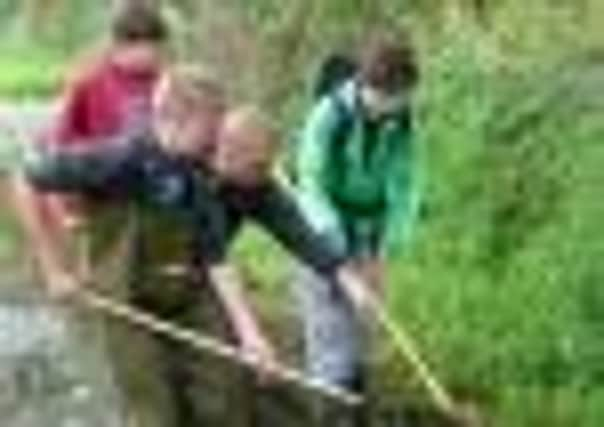Students turn lifesavers for trout


Paul Coulson and his students were tasked with rescuing as many fish as possible from Water Forlorns, a chalk stream that runs through the town.
“We are familiar with the area and in particular with the stretches concerned so we were asked if we could help,” said Paul Coulson.
Advertisement
Hide AdAdvertisement
Hide Ad“I contacted Alan Mullinger of the East Yorkshire Chalk Rivers Trust who provided us with a transport tank so we could move any fish we rescued quickly and safely.
“This job was urgent to preserve the genetic integrity of the indigenous population of trout.”
The trouble arose as the result of a dry autumn and the over-abstraction of the aquifer by farms and industry who use boreholes to access the underground supply.
As a result, some stretches of Water Forlorns were simply dotted with puddles, some barely six inches deep.
Advertisement
Hide AdAdvertisement
Hide AdThese pools were packed with wild trout, bullheads and other species.
The rescue mission took a full day and involved over 20 students, all of whom systematically combed a stretch of stream a mile long hoping to rescue as many fish as possible.
“The beck is fed through a series of underground springs, which in turn are fed by the aquifer,” adds Paul Coulson. “At the end of the day we had taken 89 wild trout from the drying stream which represented all stages of the reproductive cycle, from first year fish to fully grown spawning animals and this clearly shows a healthy population. These fish can never be replaced.
“We also took thousands of bullheads out. These are significant because they are an indicator species and a large population shows a healthy habitat.”
Advertisement
Hide AdAdvertisement
Hide AdAlan Mullinger from the East Yorkshire Chalk Rivers Trust, added, “These brown trout are a very rare genetic strain and cannot be replaced. Without the rapid response by the college it is likely that many would have died.
“The students have experienced what could be a once in a lifetime event and under the guidance of their lecturer and technician they have had the opportunity to remove fish in very difficult circumstances.
The trout removed from the Water Forlorns were placed in the Driffield canal. “We can only wait to see if the water levels recover – a wetter winter will help and the canal joins the main river system at points so the fish can find their way back to spawn,” said Paul Coulson.
“This was a great experience for the students who all derived a great sense of satisfaction from removing and rehoming the fish. It was a fantastic way for them to learn about different rescue techniques in a live situation.”